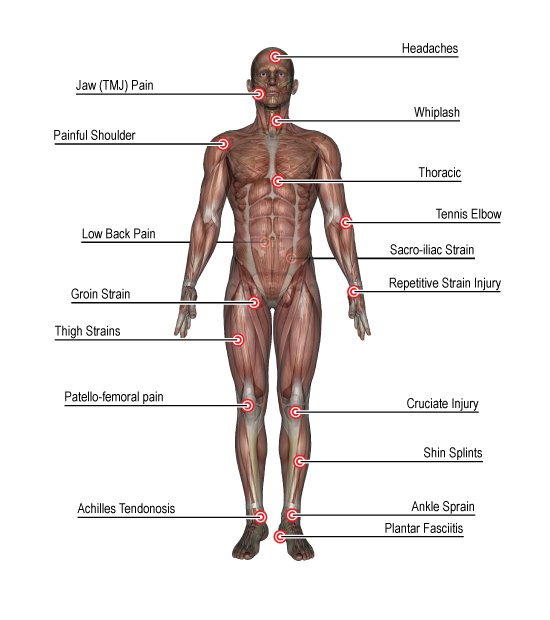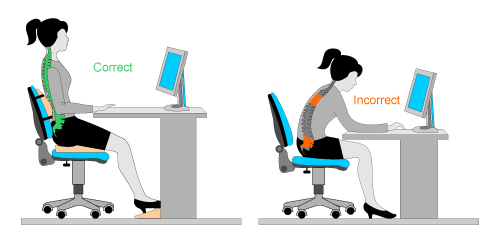|
Sally RichtM.C.S.P. S.R.P. Appointments: 01462 615492 Urgent enquiries: 07884 433 289 Letchworth physiotherapist clinic Devonshire Business Centre Works Road Letchworth Garden City Hertfordshire SG6 1GJ You will receive a warm welcome in a friendly atmosphere, and we will be happy to answer any queries or worries that you may have about the treatment. Weekday evenings and Saturday morningappointments available. Treatment by appointment only. Private Health cover accepted including BUPA. |
Conditions and Treatments
Using our extensive knowledge in anatomy and physiology, we offer assessment, treatment and rehabilitation for many conditions including:
• Back and Neck Painclick here
• Sports Injuriesclick here
• Shoulder Painclick here
• Muscle and ligament strainsclick here
• Nerve pain including Sciaticaclick here
• Headaches and Migrainesclick here
• Overuse injuries/conditionsclick here
• Fractures, dislocations and Post-operative rehabilitationclick here
• Arthritisclick here

There are many different types of back and neck pain and it can present in many ways, ranging from a mild occasional ache to a severe, constant pain.
The pain may be related to:
• A sudden injury or incident (for example a car accident or a lifting injury)
• Repetitive activity
• Sustained poor posture
• Lack of or increased activity
• Degeneration or disease processes
eg. Disc degeneration, spondylosis, disc flattening through ware and tear, poor posture, overweight, and heavy lifting, which can lead to pain and restriction of movement and nerve compression.
Pain may be referred into the head, arms or legs from the back and neck.
Sports Injuries / Muscle and ligament strains
Injuries are common in sport and can be related to:
• direct trauma
• strain
• poor or changed technique or change of equipment
• repetitive activity
• weakness and/or tightness of muscles
Examples of sports injuries are:
• Ligament sprains/injury (for example ‘twisted ankle’) or Achilles tendon
• Muscle and tendon injury (for example a hamstring tear) or groin strain
• Joint strains, shoulder , hip and knee problems; including cruciate injury, cartilage tear and ligament injuries.
• Specific conditions such as tennis or golfers elbow.
Shoulder Pain
Shoulder pain may develop due to a variety of reasons and it is very important to have a thorough assessment to establish the cause.
The following are some examples:
• Impingement – one of the most common causes of shoulder pain in adults where there is pressure on the muscles of the shoulder when the arm is lifted.
• Instability – this is when the shoulder joint is too loose and is able to slide around too much in the socket. This can follow significant trauma, repetitive micro trauma through repetitive activity or due to a general ligament laxity
• Muscle tears – due to trauma, repetitive activity or wear and tear
• 'Frozen Shoulder' – a condition where the shoulder becomes painful and very stiff with symptoms having a significant affect on activities of daily living, also becomes restrictive in all ranges of movement
• Arthritis – a degenerative disease caused by either wear and tear of the cartilage (Osteoarthritis) or inflammation of one or more joints (Rheumatoid Arthritis)
• Referral from the neck - Shoulder pain isn't always caused by a problem in the shoulder joint. Problems in the neck, for example, can cause pain that is actually felt over the shoulder blade or in the upper outer arm
You may also find you need some support with rehabilitation following a fracture, dislocation or operation.
Nerve pain including Sciatica
Nerve pain, also called neuralgia, follows the paths of specific nerves.
There are many causes of nerve pain:
• direct trauma
• nerve degeneration
• inflammation
• compression
• diseases including many types of arthritis
Headaches and Migraines
Headache is a complex type of pain which may have several causes and can be difficult to treat. Many headaches can be caused through muscle tension and / or joint stiffness in the neck, also known as attention headache, because nerves in the neck are connected to those in the head and face. There is evidence that Physiotherapy helps to relieve headaches and migraines.
Overuse injuries/conditions
Pain related to any repetitive activity:
• Work related (for example use of a computer mouse, operating machinery)
• Sport related (for example ‘tennis elbow’, ‘Achilles tendinopathy’, ‘shin splints’)
• Other hobbies (for example gardening, needlework)
• Posture related
• Sports related (for example ‘tennis elbow’, ‘Achilles tendonitis’, ‘shin splints’)
Ergonomics
• Advice on posture
• Advice on workstations

Fractures, dislocations and Post-operative rehabilitation
Rehabilitation and advice can facilitate recovery and return to normal activity.
• Most fractures involve immobilising the fractured limb by applying plaster around it for up to 6 weeks, which can leave the limb stiff, swollen and weak. Physiotherapy can rehabilitate you back to full functional ability.
Examples include:
• Ankle or wrist (colles) fractures following falls
• Shoulder or knee cap (patella) dislocations following sports injuries
• Spinal surgery
• Hip joint, knee joint replacement
Arthritis
A general term given to joint changes and diseases which occur in the body.
There are many different types of arthritis, some examples include:
• Ankylosing Spondylitis
• Osteoarthritis
• Rheumatoid Arthritis
• Osteoporosis
• Fibromyalgia
We will provide you with a clear understanding of your condition. We will also give you the appropriate advice on posture, ergonomics and exercises.
Manual Therapy
This is the skilled application of ‘hands on’ physical interventions including both soft tissue and joint techniques. Mobilisation, manipulation and massage are all types of manual therapy. Following a careful examination you may be offered this form of treatment if it is thought it will facilitate your recovery or bring about improvements in your condition.
The aim of manual therapy techniques is to reduce pain, facilitate movement and improve function.
Acupuncture
Acupuncture is based on ‘traditional Chinese’ approach and is a method used to relieve pain and discomfort and to stimulate your body’s natural healing process.
Electrotherapy
Is used to reduce pain, enhance tissue repair and promote healing.
Rehabilitation
Often you will be taught exercises to aid your rehabilitation. These exercises will be tailored to your specific needs including your injury/condition as well as your normal level of activity. Exercises taught or advised may take the form of stretches, strengthening, balance or stability training as well as general aerobic/movement type exercise. Your recovery may also benefit from taping techniques to inhibit or facilitate muscle activity or specific movements.
What we offer:
We offer treatment for a wide variety of conditions including:
• General back pain and sciatica
• Low back pain
• Neck pain and headaches
• Disc pain and trapped nerves
• Arthritic pain and stiffness
• Whiplash injuries
• All joint pains
• Muscle & ligament sprains
• Rehabilitation following fractures and total hip and knee replacement
All sports injuries including:
• Running injuries
• Rugby & football injuries
• All racket sport injuries
• Achilles Tendonitis
• Shin Splints
• Knee injuries
We offer treatment for all muscular joint, nerve and spinal conditions. On the first attendance we assess your condition thoroughly, so that the correct treatment can be implemented as quickly as possible.
Treatment includes:
• Hands on treatment techniques on a one-to-one basis.
• Spinal and peripheral joint mobilisations and movement.
• Postural analysis and control.
• Soft tissue techniques
• Specific exercise programmes designed for you
• Acupuncture
• Electrotherapy
• Massage
• Ergonomic workstation advice
